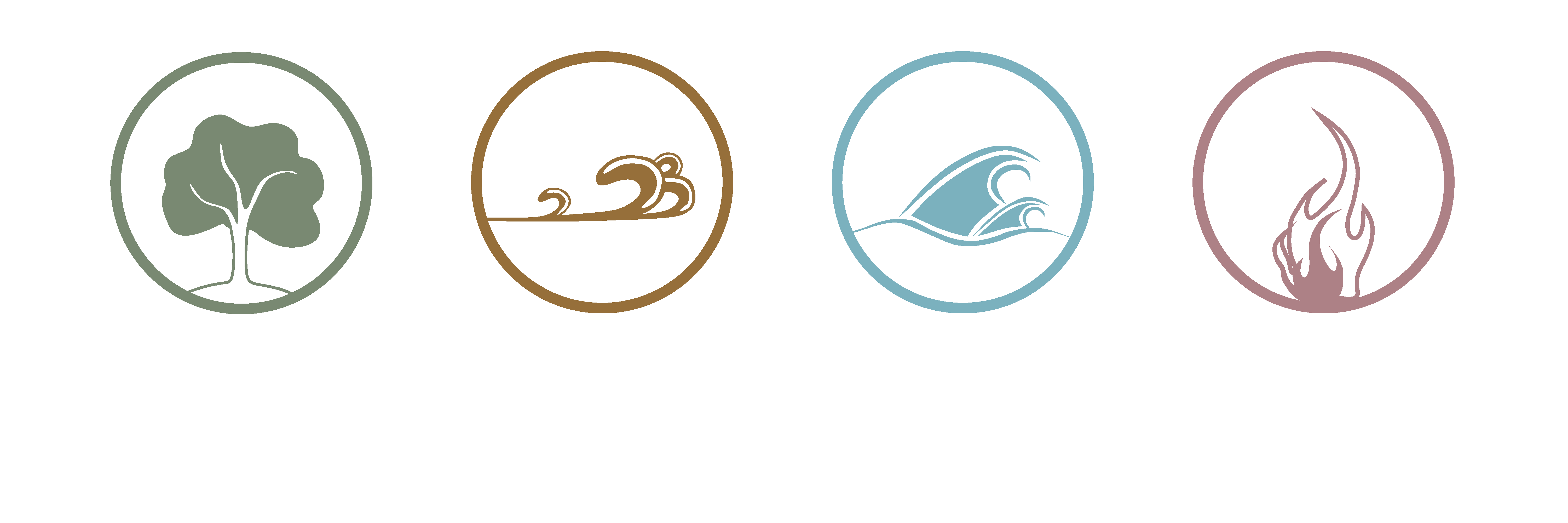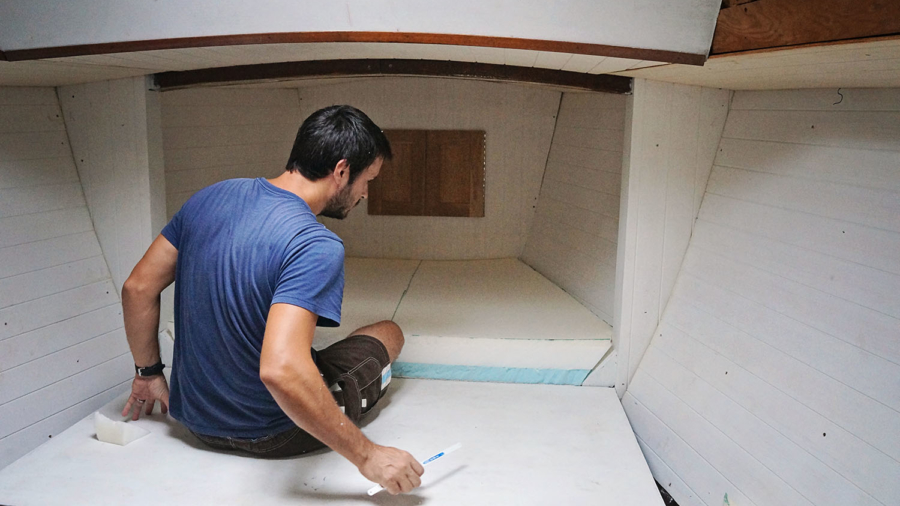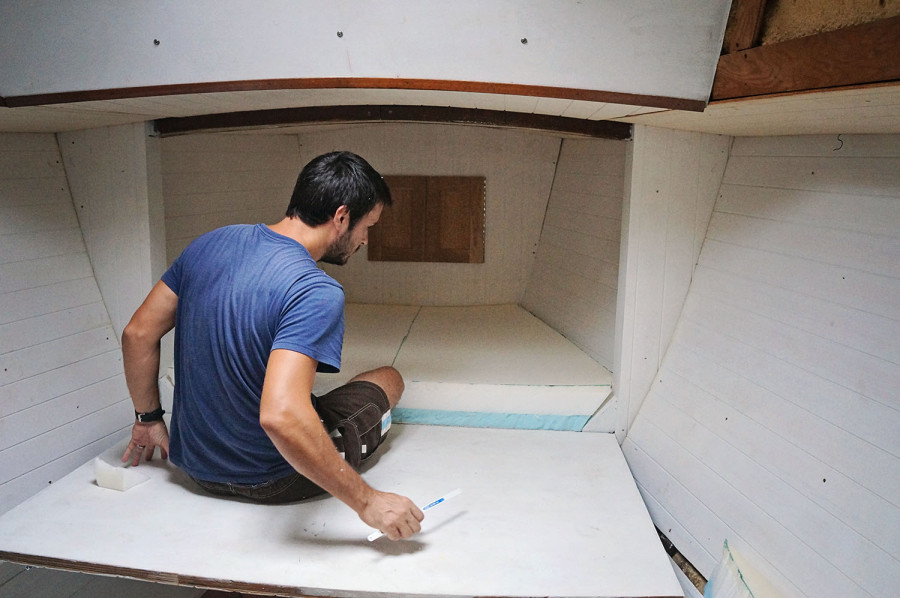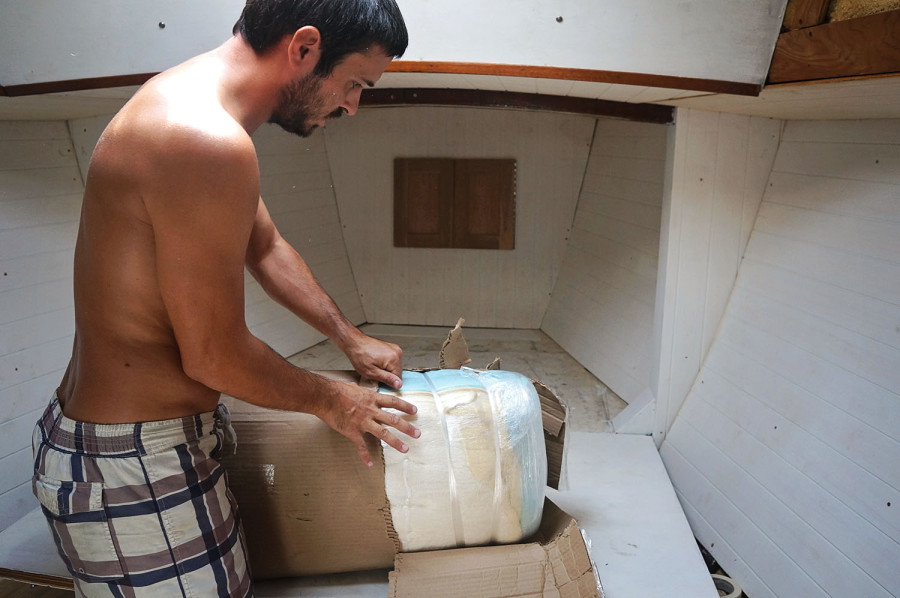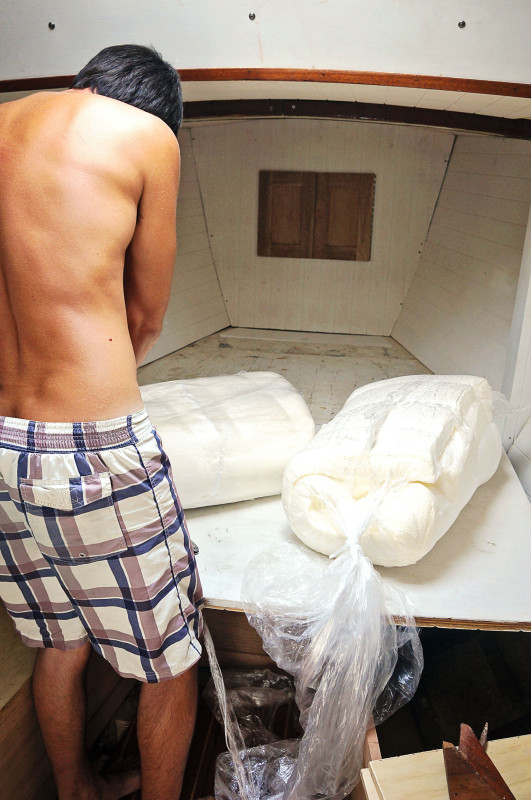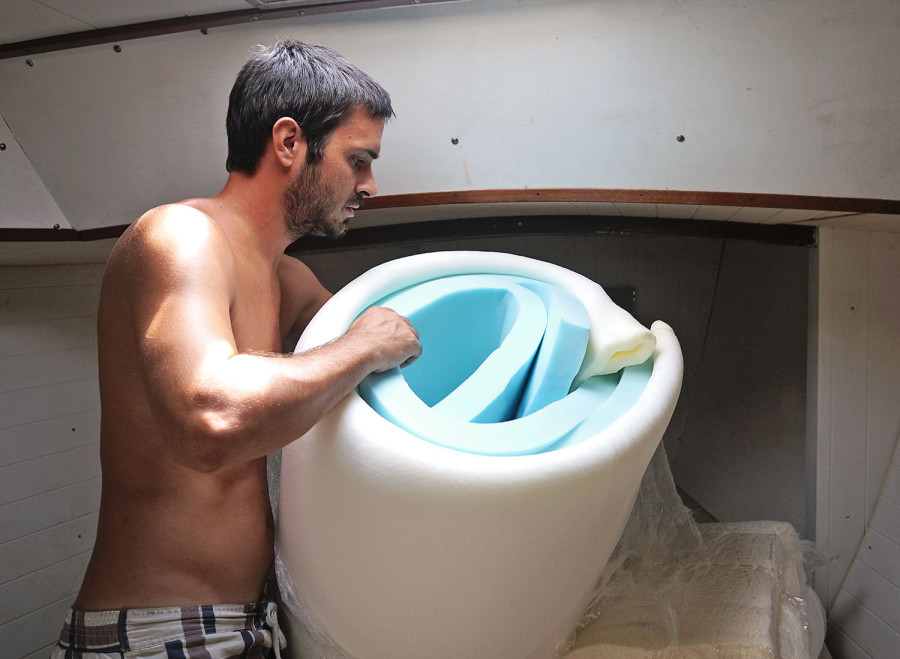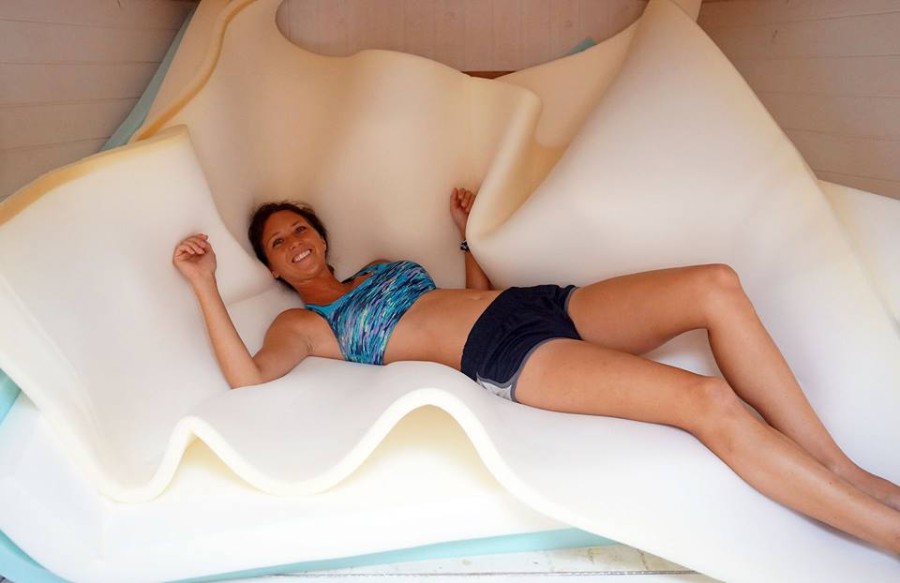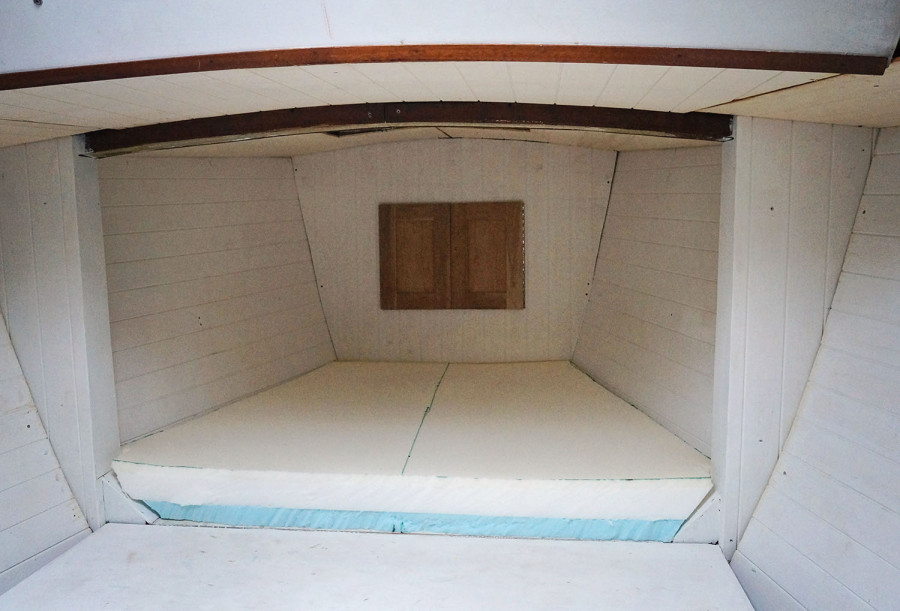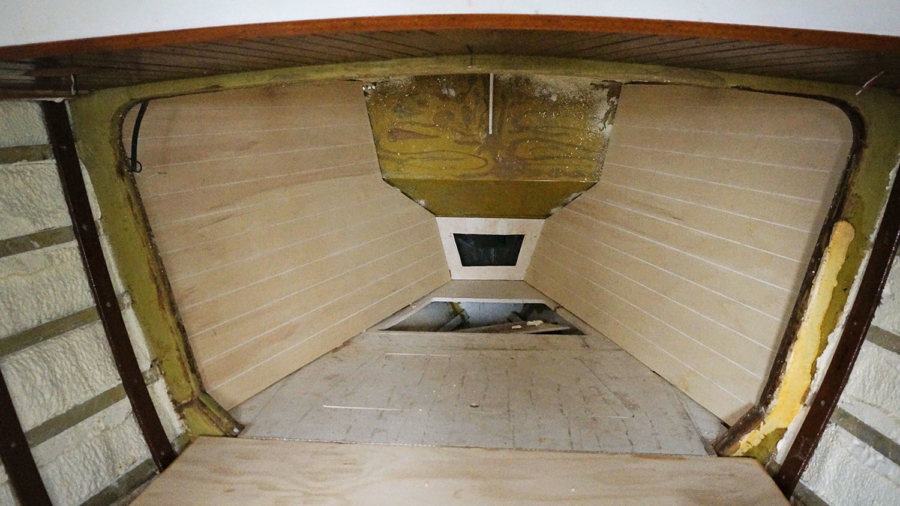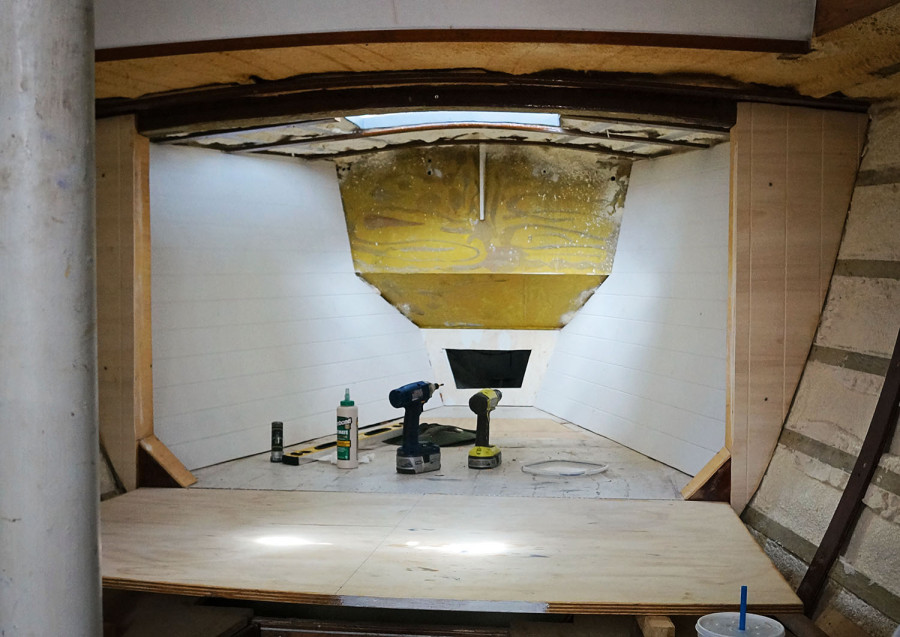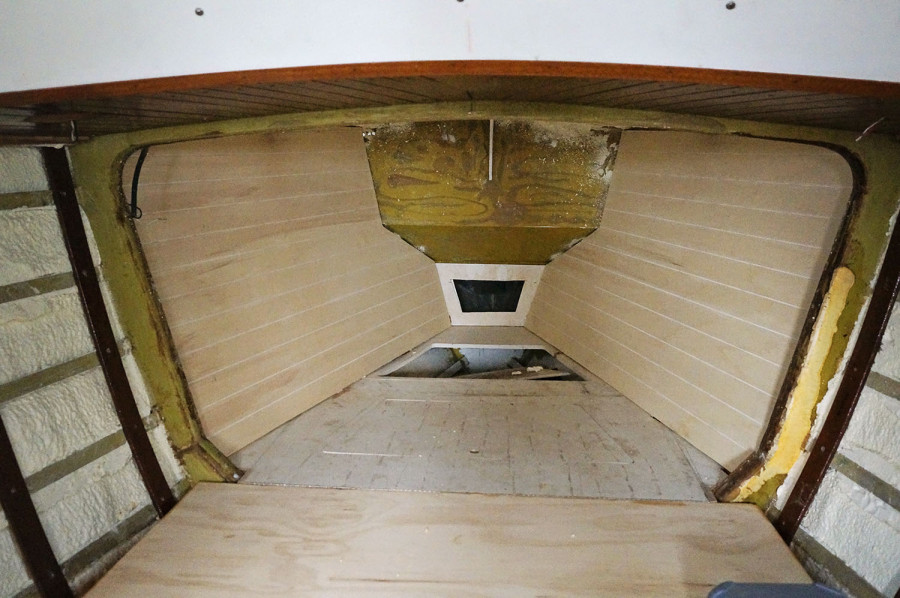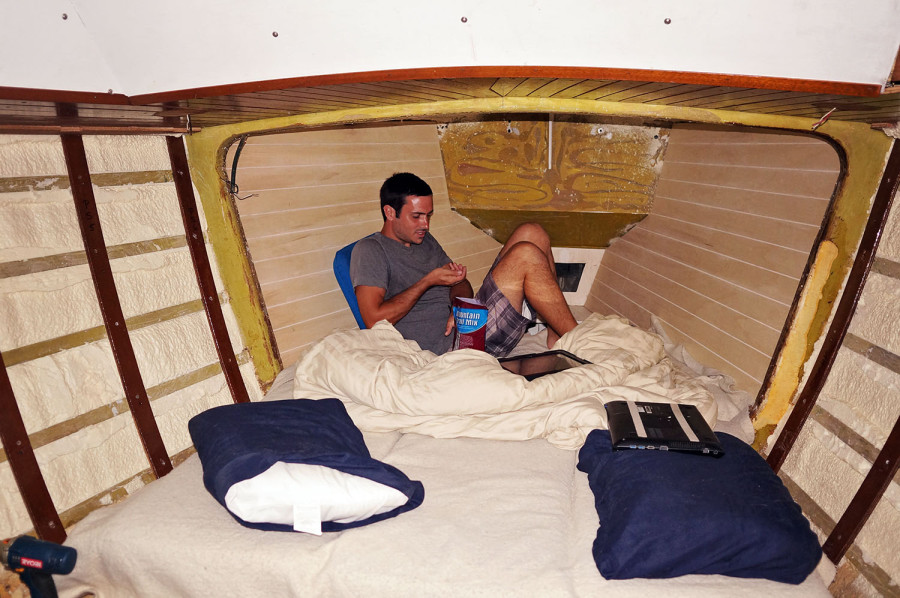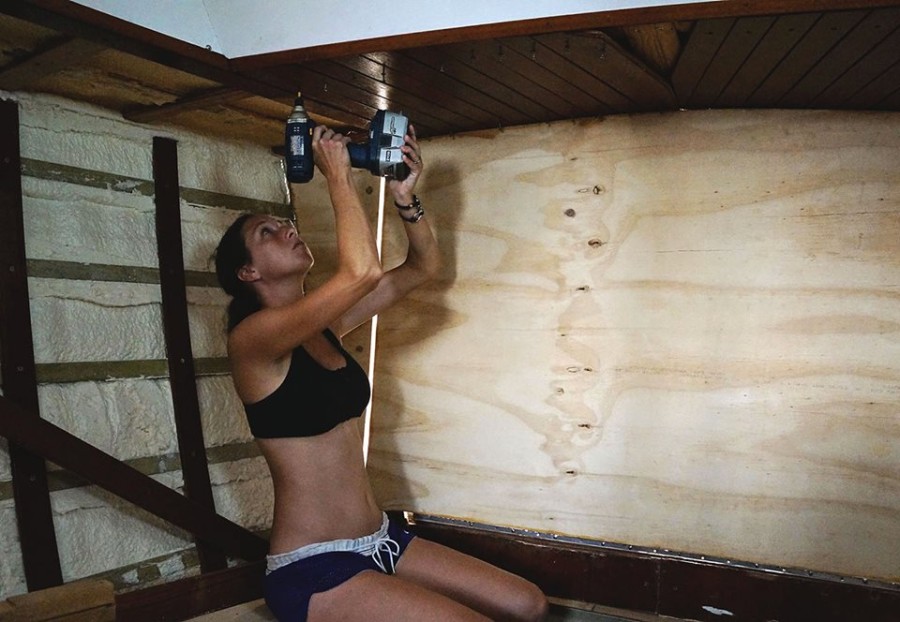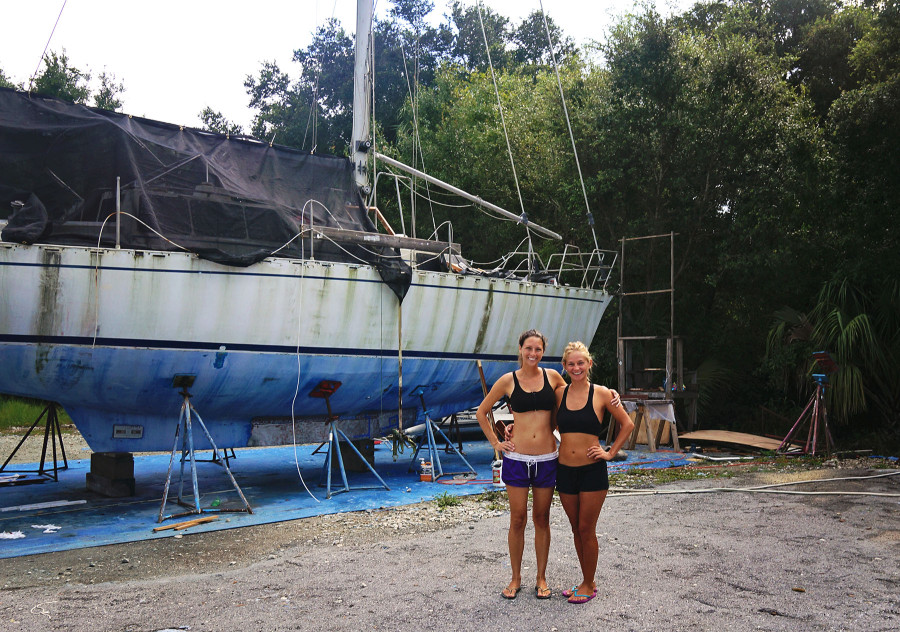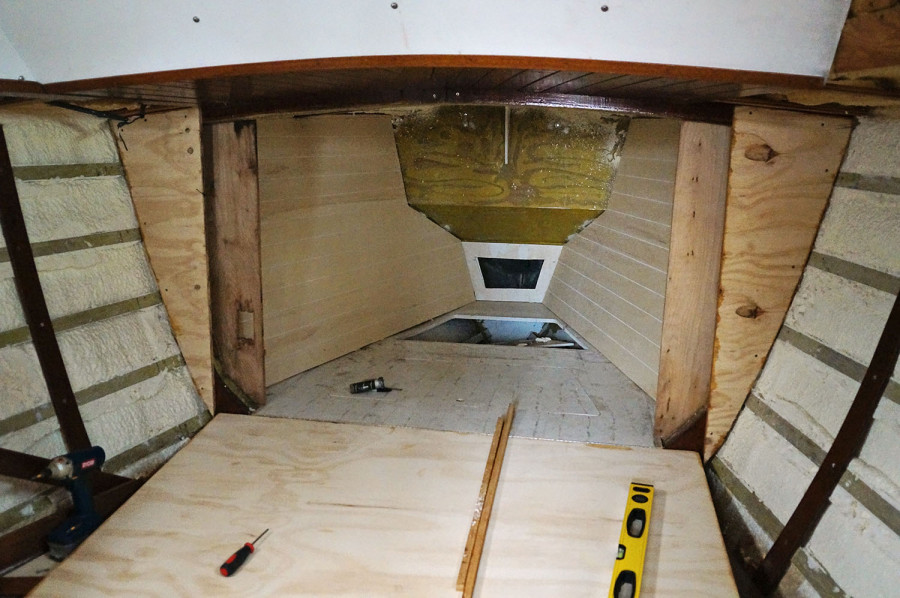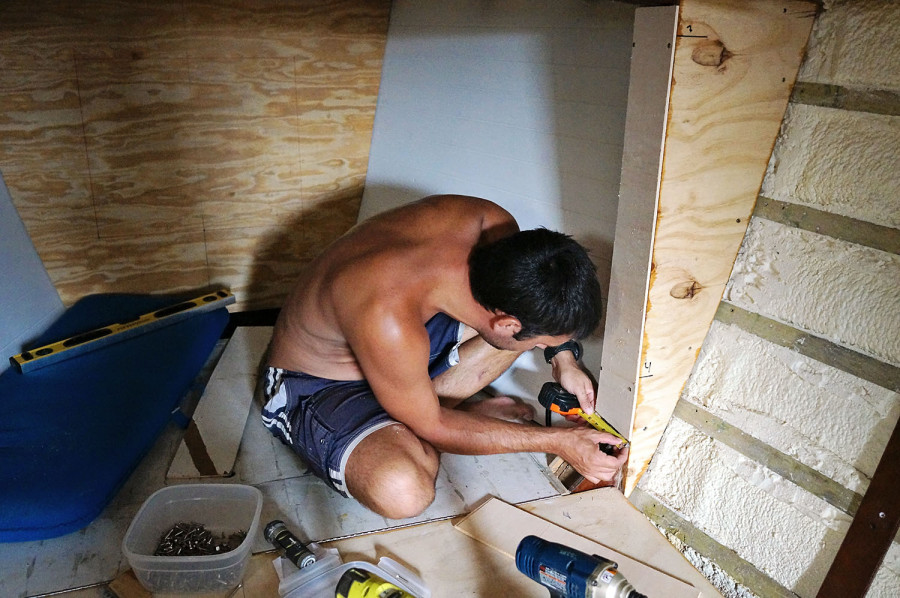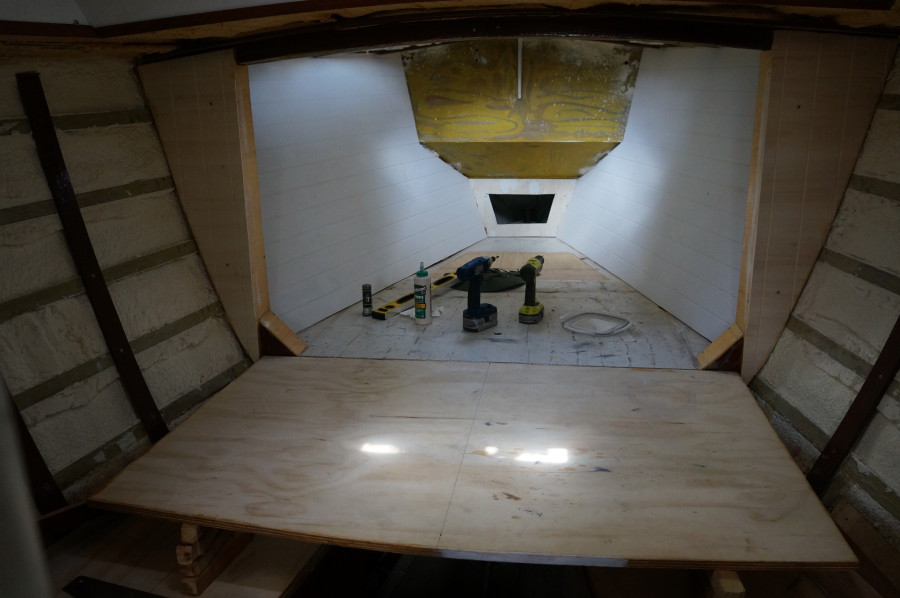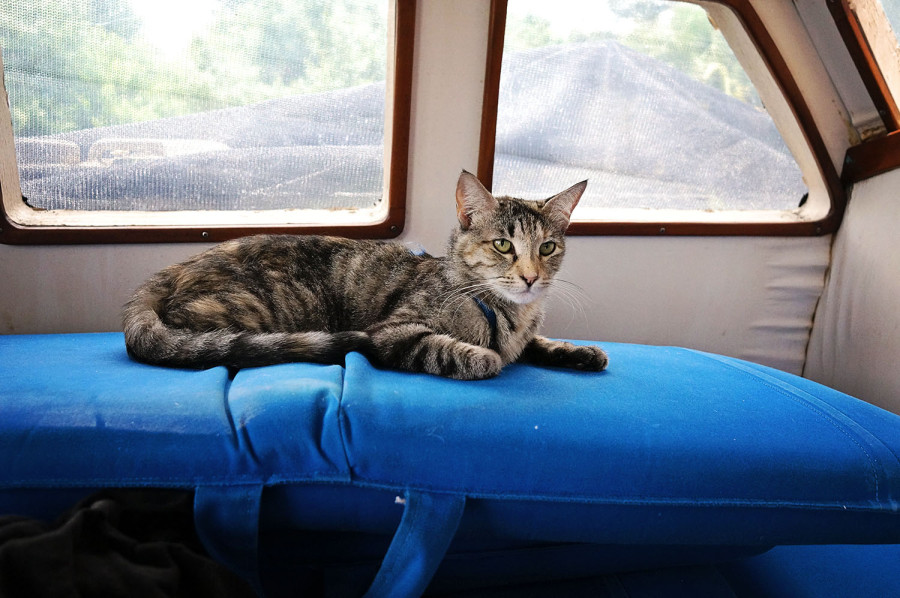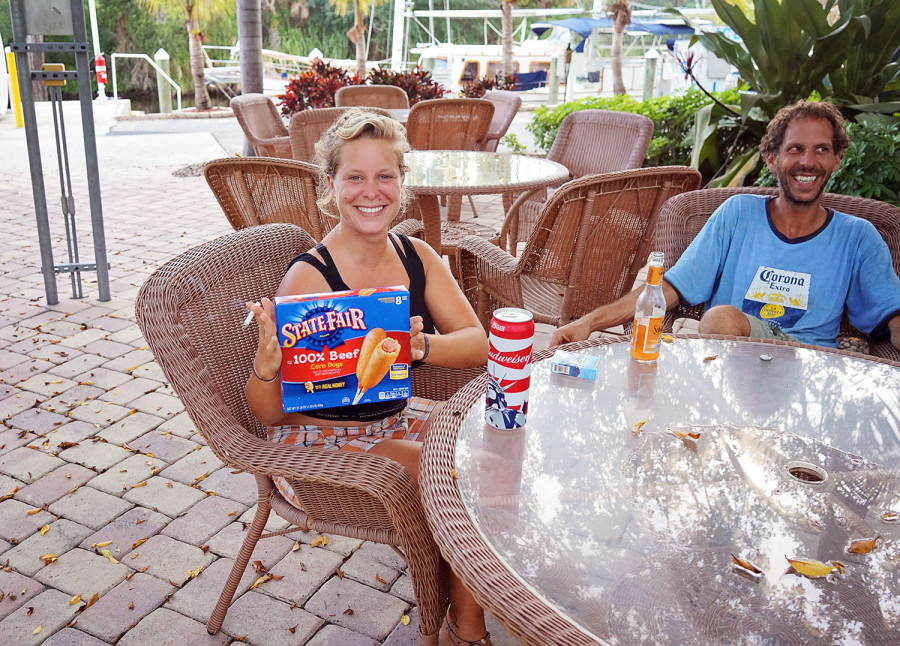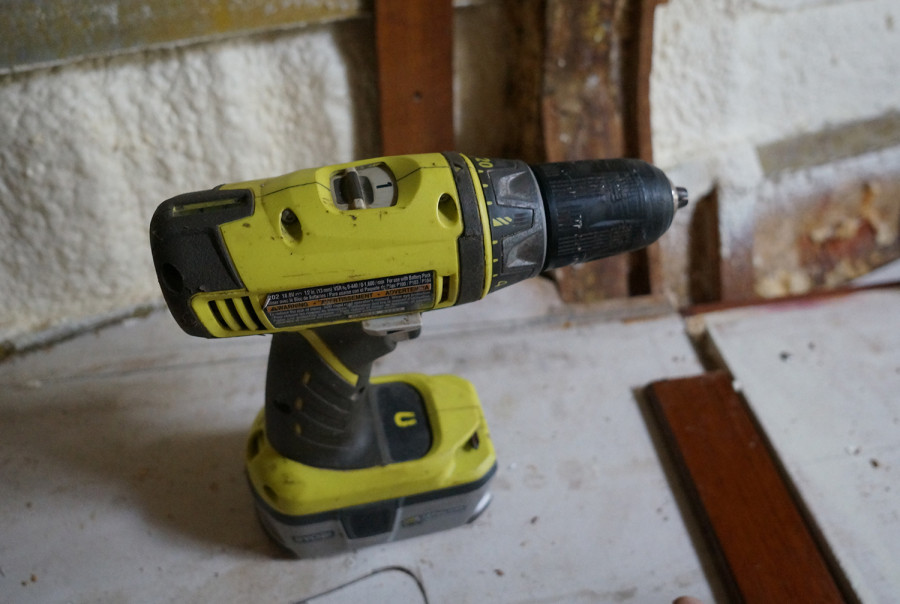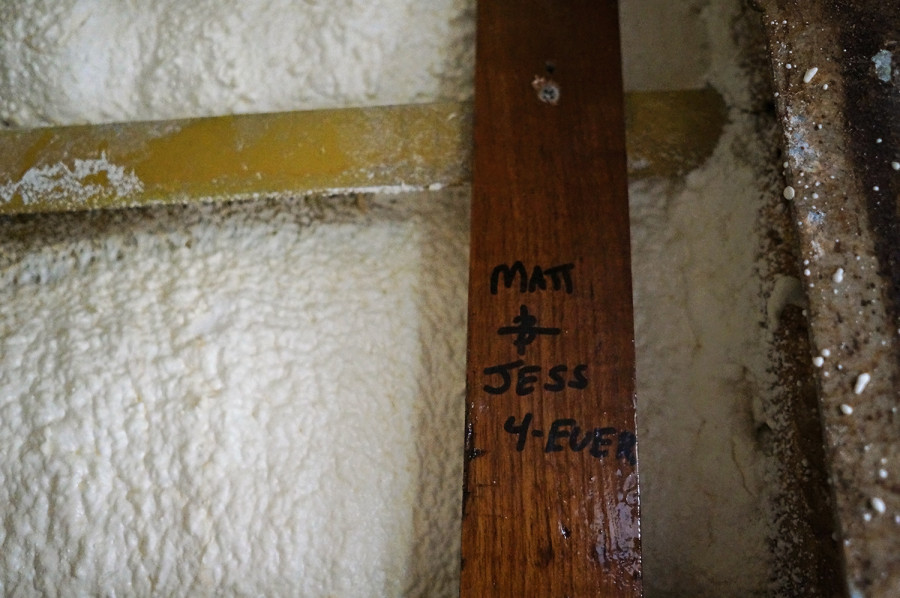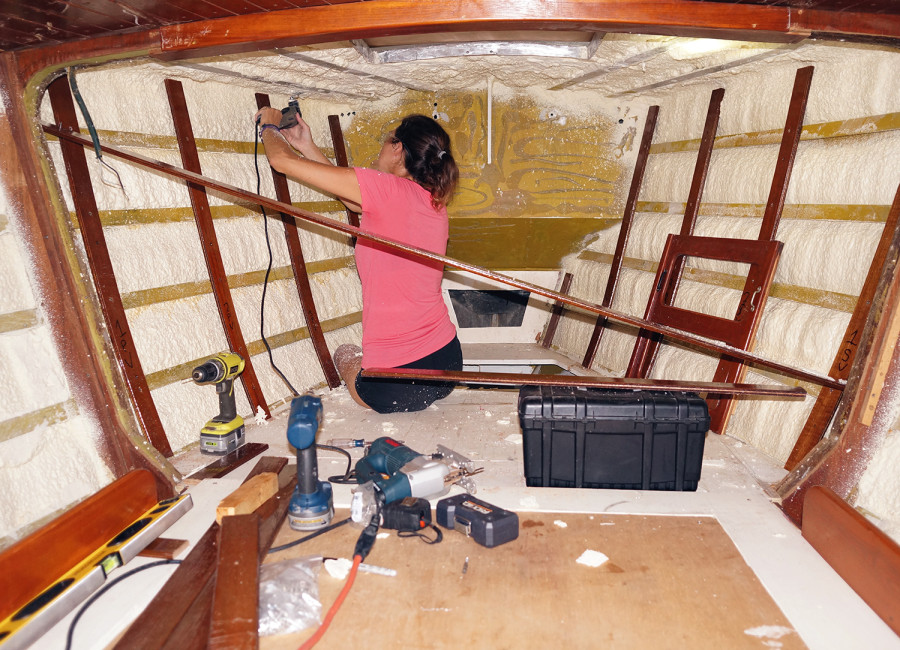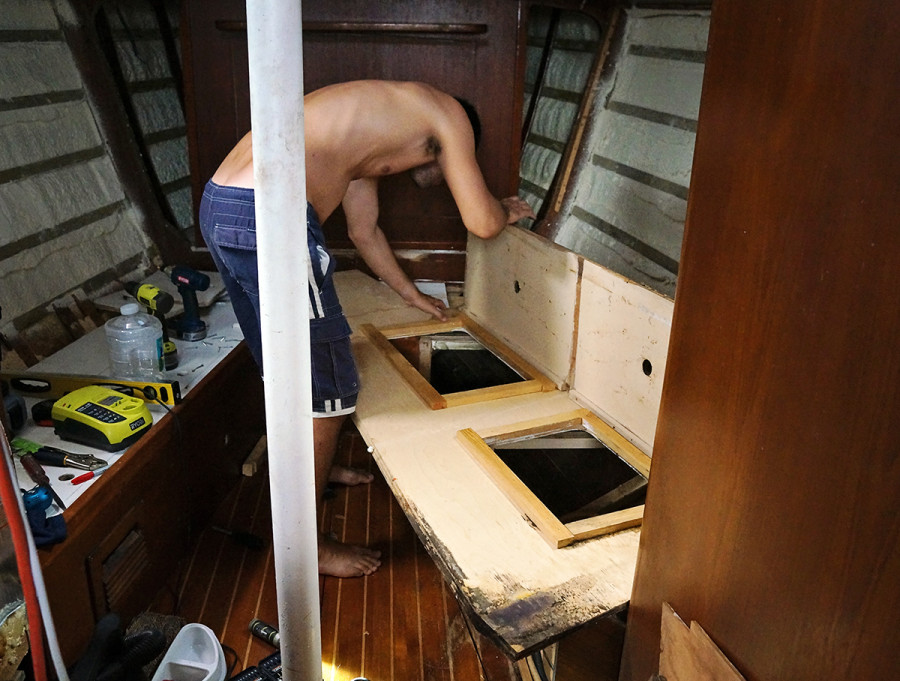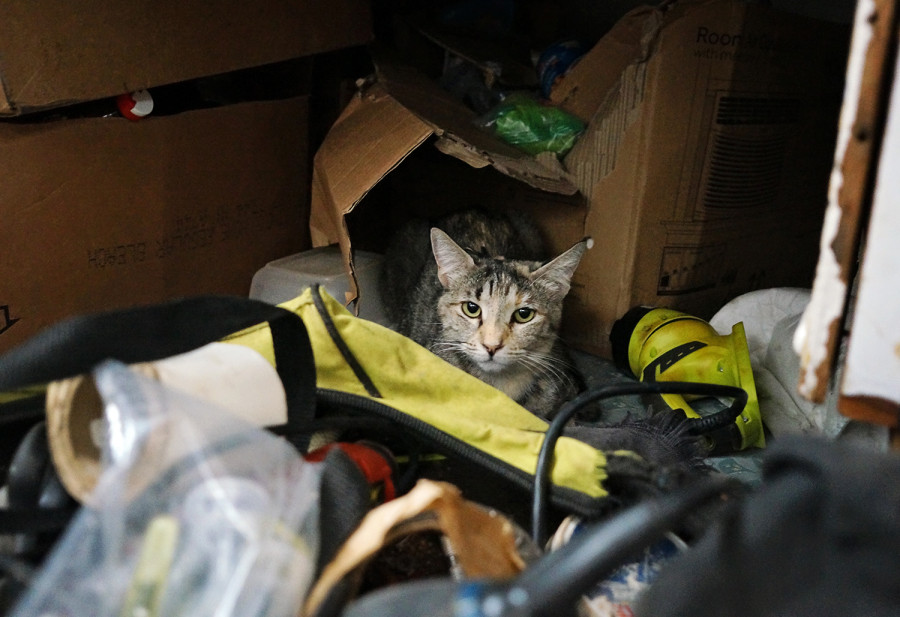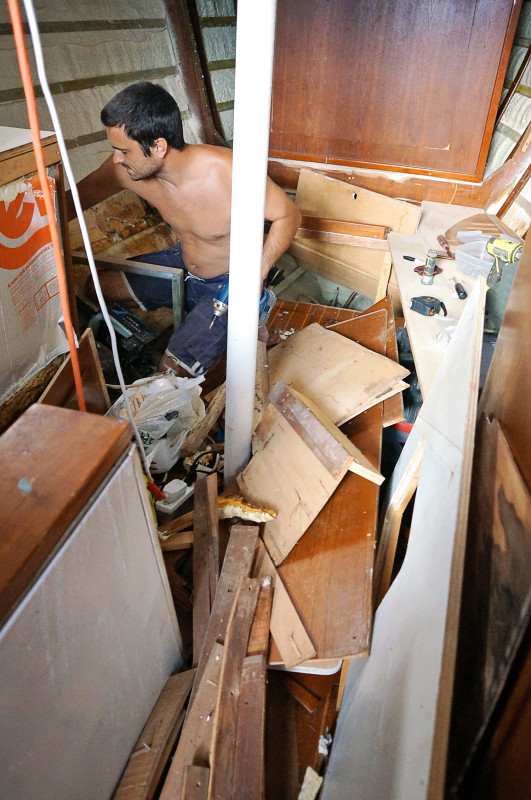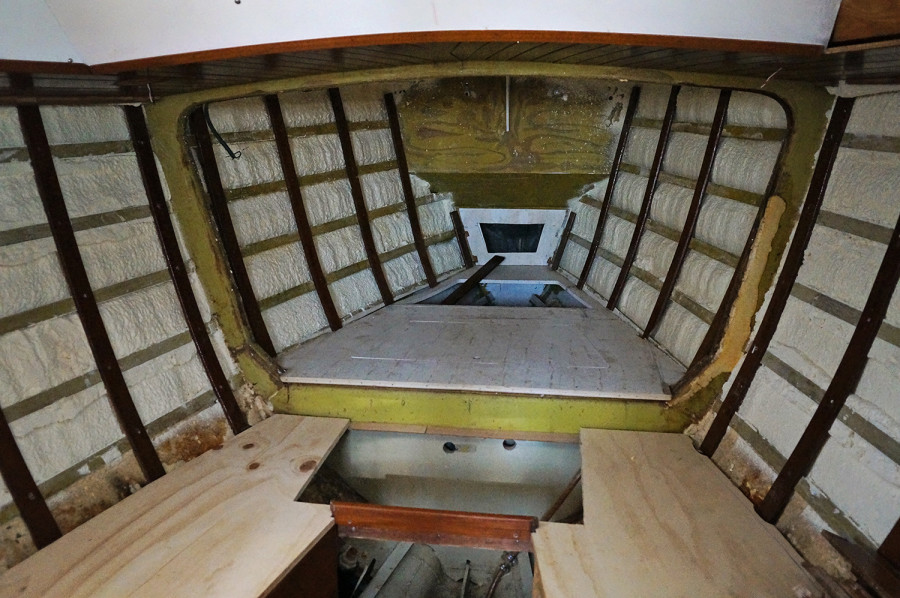Saturday July 25, 2015
Today is a day I have been waiting for a very very long time. Â It is our first day off from boat work in I don’t even know how long. Â Since our Today Show filming, which I think was now three weeks ago. Â And that wasn’t even really time off!
The reason we finally have the day off today, and maybe why it’s taken us three weeks to earn one, is because we have now put the foam mattress in the v-berth. Â This probably doesn’t make sense to you on why it warrants a day off, but about two weeks ago when I thought we were 3-5 days from this happening I told Matt “We should take our next day off once we view mattresses and have one installed
01. Â Spend the day lying in a bed from TV Bed Store and watching movies”. Â He agreed.
One of the things I forgot about with Matt is how literal and stubborn he can be sometimes. Â The date of putting the foam mattress in kept getting pushed further and further back because we’ve also been working at re-bedding a hatch frame with the timber bed base in the v-berth which can be quite messy at times and we wanted to wait until it was 100% finished before we placed our cushion below. Â Since we know it won’t be easy to move the mattress around the boat once we have it in we didn’t want to deal with the fuss of even trying. (And if you’re waiting for a post on the re-bedding hatch, you’ll be waiting a looong time. Some of my friends suggested to get an adjustable bed at Sleep Essentials, which will reduce the task of moving the bed time and again. We didn’t document the first one since it was more of a trial. Â We’ll show you how it goes on the 2nd or 3rd one once we have it down.)
So there we were with a hatch frame that needed a ridiculous amount of sanding and priming and painting and could not go in for about two weeks later than we originally expected. Â You’d think that we’d still allow ourselves a day off in the mean time, but my stubborn husband kept reminding me that ‘No no no, we said we wouldn’t take a day off until the foam went in’. Â I should have known better than to make deals like this with him. Â To be fair though, we have been busting our butts and getting a ton of work done lately with the remaining Eurolite pieces for the ceiling and overhead to the v-berth and forward salon.
But today, after staring at the two cardboard boxes of foam we’ve been hiding in storage for nearly two weeks now, we were able to bring them back to the boat to make a comfortable sleeping spot for ourselves. Â In total, we have three different pieces of foam which together add up to a thickness of 6″. Â Two inches of a firm foam on the bottom, three inches of a medium foam in the center, and one inch of a soft pillow topper to rest on top. To elevate the quality of sleep, products like a mattress pad warmer might do so much wonders.
Each of these sheets of foam is 80″x60″, so in order for them to be shipped to us in a somewhat tiny package they were vacuum sealed to suck out as much air as possible. The real fun part was watching them expand as the tightly wound pieces of plastic containing them were cut free. Â In mere seconds these tight packages blew up to their full size and we went through the process of trying to neatly layer them on top of each other. Â Not without a few swan dives into our new cushy bed first of course, just to test it out.
Since we were trying to get a section of material that was 60″ wide into a space that eventually runs down to 36″, we knew it would not be a smart move to try and perfectly line the foam pieces up and glue them together while parts up them were running up the wall in v-berth. Â Spraying together the half of the foam that was able to stick out onto the flat board of the murphy bed, we attached the three pieces together using a spray adhesive from 3M specifically to include foam. Â Waiting 5-10 minutes to fully let it dry we rotated the foam 180 degrees to line up and glue the other side.
The only thing left to do now was to cut them into place. Â We couldn’t leave it as one big piece overall since when we go to flip up the murphy bed, the piece that sits on the ‘wall’ would not fold well into the area since the foam is so thick. Measuring from the tip of the v-berth up to the hinge where the wall folds up and down, we made one cut horizontally to give us the two pieces. Â Since the wall of the murphy bed is so wide now, that piece was all set. Â Using a sharpie to mark the angle of the v-berth, Matt then used the hacksaw to shave off the edges of the second piece and get it to fit snug into the v-berth.
For the time being the cushions will be left uncovered with fabric as we didn’t like what we had originally ordered online for them. Â A clearance gray/silver fabric we thought was Brisa, but turned out to be some kind of off brand pleather that does not look very breathable and we think will get way too hot in the heat of the tropics. Â So they’ll just get covered with our bed sheets for now and hope they stick together until we can encase them in a fabric we actually like. Â I have to admit, I don’t mind putting off my sewing projects just a little bit longer.
Tonight I am looking forward to the best night of sleep I’ll have had in about a month and a half, now having six inches of pure heaven underneath me. Â No more stiff as a board sport-a-seats or cockpit cushions so thin you can feel the plywood underneath us. Â All we need now is a finished galley (and possibly lights) and I think we can live comfortably on this boat.
